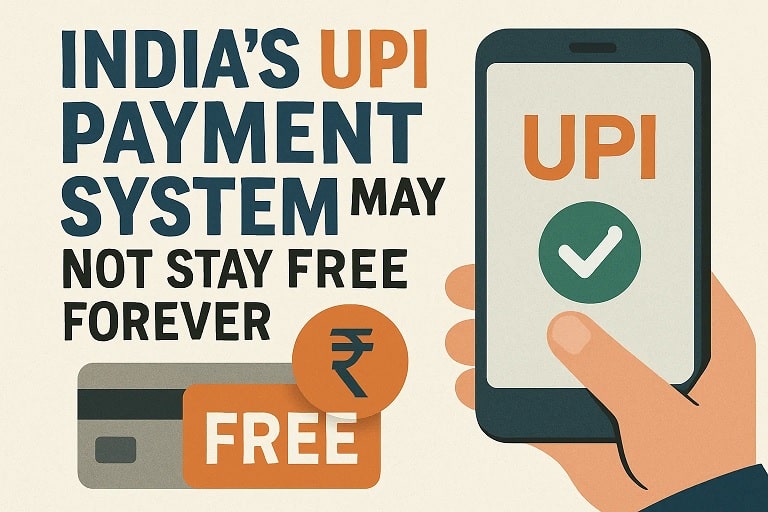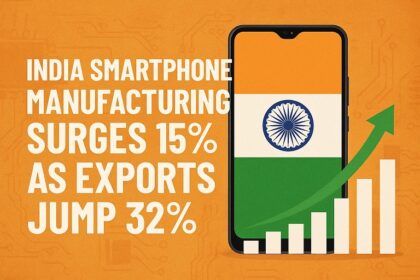India’s Unified Payments Interface (UPI), the world’s leading real-time digital payment system, may not remain free for users indefinitely, according to Reserve Bank of India (RBI) Governor Sanjay Malhotra. Speaking at the post-Monetary Policy Committee (MPC) press conference on August 6, 2025, Malhotra clarified, “I never said that UPI can stay free forever. What I said was there are costs, and they need to be paid for by someone.” With UPI processing a record 19.47 billion transactions worth ₹25.08 lakh crore ($301 billion) in July 2025, the system’s zero-fee model—subsidized by the government and banks—is under scrutiny as costs mount. As banks like ICICI begin charging payment aggregators, the debate over UPI’s sustainability intensifies, even as it expands globally to countries like Sri Lanka and Peru.
Background on UPI and Its Growth
Launched on April 11, 2016, by the National Payments Corporation of India (NPCI) and regulated by the RBI, UPI is a mobile-based, real-time payment system that enables instant peer-to-peer (P2P) and person-to-merchant (P2M) transactions. Users can link multiple bank accounts to a single app, using a Virtual Payment Address (VPA), QR code, or mobile number, eliminating the need for bank details. With over 260 million users in a population of 1.4 billion, UPI has driven India’s cashless revolution, reducing cash transactions from over 90% pre-2016 to under 30% in 2024. In July 2025, UPI handled 19.47 billion transactions (640 million daily), a 32% year-on-year increase, with a value of ₹25.08 lakh crore, per NPCI data.
UPI’s interoperability, allowing transactions across apps like Google Pay, PhonePe, and Paytm, and its zero-cost model for users have fueled adoption. The system has saved India’s economy an estimated $67 billion since 2016 by reducing cash dependency and enabling micro-transactions, such as paying ₹10 ($0.12) for tea. Innovations like UPI Lite for offline transactions and conversational voice payments, unveiled at Global Fintech Fest 2024, further enhance accessibility.
The Cost of Free UPI
Despite its success, UPI’s free model is not cost-free. The government subsidizes ₹1,500 crore annually, plus incentives, while banks and NPCI bear additional costs, estimated at ₹10,000 crore yearly. Malhotra emphasized at the Financial Express BFSI Summit in July 2025 that “any important infrastructure must bear fruit,” noting that costs must be covered for sustainability. He reiterated on August 6, “Who pays is a matter of detail—what matters is that someone is footing the bill”.
ICICI Bank, India’s second-largest private lender, has taken a step toward monetization by charging payment aggregators (PAs) like Razorpay and PayU 2 basis points (₹0.02 per ₹100), capped at ₹6 per transaction, for UPI transactions processed through escrow accounts. PAs without escrow accounts face a ₹10 fee per transaction, while no charges apply if funds settle directly into an ICICI merchant account. Axis Bank and Yes Bank have reportedly followed suit, reflecting a broader shift among top UPI service providers. These fees aim to recover investments in UPI infrastructure, as banks earn no Merchant Discount Rate (MDR) on UPI transactions, unlike card payments.
UPI Statistics and Costs | Details |
|---|---|
Transactions (July 2025) | 19.47 billion (₹25.08 lakh crore) |
Daily Transactions | ~640 million |
Annual Cost Estimate | ₹10,000 crore |
Government Subsidy | ₹1,500 crore + incentives |
ICICI Bank PA Fees | ₹0.02 per ₹100 (capped at ₹6) or ₹10 per transaction |
P2M Share (May 2024) | 62% of total transactions |
Why UPI’s Free Model Is at Risk
Several factors are driving the push for monetization:
Rising Costs: UPI’s transaction volume, up from 1 million in October 2016 to 19.47 billion in July 2025, strains infrastructure. Banks and NPCI invest heavily in servers, fraud prevention, and interoperability, with no direct revenue from transactions.
Bank Initiatives: ICICI’s fee structure incentivizes merchants to bank directly with them, allowing banks to earn from idle funds. Other banks may adopt similar models, passing costs to PAs, who may then charge merchants.
Sustainability Concerns: Malhotra noted that while government subsidies have driven adoption, a long-term funding model is needed. Posts on X suggest the RBI or government could cover fixed costs to avoid user fees, citing savings from reduced cash handling and tax formalization.
Global Expansion: UPI is now accepted in seven countries (e.g., UAE, Sri Lanka) and used by NRIs in 10 countries, with agreements signed with Peru, Namibia, and others. Scaling internationally increases costs, requiring sustainable financing.
However, charging users directly could reduce adoption, particularly among small merchants and low-income users. X posts highlight mixed sentiments, with some users arguing that savings from fewer ATMs and currency printing justify keeping UPI free, while others criticize banks for poor service during outages, questioning why users should pay.
Implications for Stakeholders
Consumers: No user fees are planned yet, but if PAs pass bank charges to merchants, prices for goods and services could rise, indirectly affecting consumers. Small transactions, like paying for street food, may become less viable if fees are introduced.
Merchants and Fintechs: PAs, already subsidizing UPI costs, face pressure from bank fees. Some may absorb costs, but others could charge merchants, particularly for high-value transactions, impacting small businesses.
Banks: Monetization allows banks to recover infrastructure costs, but aggressive fees could drive merchants to competitors or reduce UPI usage. ICICI’s model incentivizes direct banking, potentially reshaping the fintech landscape.
Global Expansion: UPI’s growth in countries like Sri Lanka (via LankaPay) and Peru requires investment in cross-border interoperability, potentially funded by fees or government support.
Government and RBI: Balancing accessibility with sustainability is critical. The RBI’s Payments Vision 2025 aims to maintain UPI as a “digital public good,” but Malhotra’s remarks suggest a shift toward shared cost models.
Potential Solutions and Innovations
To address sustainability, stakeholders are exploring options:
Value-Based Fees: Banks may charge PAs or large merchants for high-value transactions, sparing small merchants and users. ICICI’s model is a step in this direction.
Government Subsidies: Continued subsidies, justified by economic savings from digitalization, could delay user fees. X users argue that tax formalization and reduced cash costs offset UPI expenses.
Innovations: Features like conversational voice payments, powered by BharatGPT, aim to boost accessibility but may increase costs. UPI Lite and UPI One World for tourists show efforts to expand without fees.
International Revenue: UPI’s global adoption could generate revenue through cross-border transaction fees, supporting domestic operations.
Market and Policy Context
UPI’s dominance, processing 90% of India’s retail digital payment volume from 2023 to 2028, has drawn global interest, with countries like Japan and the U.S. exploring similar systems. The International Monetary Fund praises UPI’s interoperability, noting India’s 48.6 billion real-time transactions in 2021, far surpassing China’s 18 billion. However, technical outages, like those reported on X for Bank of India and HDFC Bank, highlight scalability challenges. The RBI’s focus on fraud prevention, using two-factor authentication and UPI PINs, ensures security but adds operational costs.
Recent U.S. tariff threats, including a 25% levy on Indian goods, have strained India’s economy, with the rupee hitting 88.10 on August 5, 2025. These pressures may limit government subsidies, pushing the RBI to explore fee-based models. Meanwhile, fintech developments, like Ant Group’s exit from Paytm, reflect a consolidating market, potentially increasing costs for smaller players.
What’s Next
The RBI is unlikely to impose user fees immediately, prioritizing adoption as outlined in Payments Vision 2025. However, banks may expand charges to PAs, with Axis and Yes Bank following ICICI’s lead. The government and NPCI will likely explore hybrid models, such as fees for high-value or cross-border transactions, to fund UPI’s ₹10,000 crore annual cost. Innovations like voice payments and global expansion to 30 countries will drive usage but require investment. Stakeholders must balance accessibility with financial viability to maintain UPI’s role as a global model for digital payments.
Conclusion
India’s UPI has revolutionized digital payments, driving financial inclusion and setting a global standard with 19.47 billion transactions in July 2025. However, RBI Governor Sanjay Malhotra’s warnings signal that its free model, costing ₹10,000 crore annually, may not be sustainable. With banks like ICICI charging payment aggregators and global expansion adding pressure, the RBI is exploring ways to fund UPI without burdening users. As India navigates economic challenges and geopolitical tensions, ensuring UPI’s accessibility and sustainability will be critical to maintaining its status as a digital public good.












